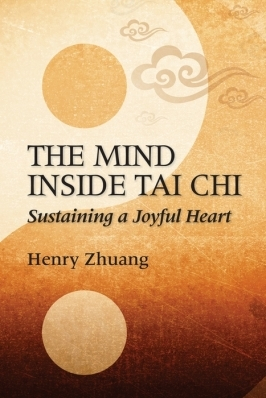It looks like you've stumbled upon a page meant to be read by our code instead of viewed directly. You're probably looking for this page.
The Mind inside Tai Chi
Sustaining a Joyful Heart
- 2015 INDIES Finalist
- Finalist, Body, Mind & Spirit (Adult Nonfiction)
Photographs that demonstrate various taijiquan techniques and movements provide a needed visual representation of this physical activity.
In The Mind Inside Tai Chi: Sustaining a Joyful Heart, Henry Zhuang provides an overview of taijiquan (also known as tai chi), the Chinese martial art often practiced more for its perceived health benefits than its defensive value. While the book does include quite a lot of information, much of it is sourced from other books or consists of long stretches of defining terms. The more practical sections seem useful, but too much of the book is a compilation of overview material.
The most useful portion of the book is one near the end, in which the author includes photographs that demonstrate various taijiquan techniques and movements. This not only provides a needed visual representation of what is a physical activity, but also makes the concepts feel more practical than do the earlier, more textbook-like parts of the book. For example, the book discusses the eight forces referenced in taijiquan—such as cai, lu, and peng—and for each features a photo of the author in motion, with a visual depiction of the force and text that explains what’s shown on the page. This strong approach could be utilized earlier in the text to improve the other material. It’s simple but practical and lives up to the adage about the value of pictures relative to words; this short section feels more thorough than the much longer chapters that come before.
Similarly, Zhuang occasionally starts to tell anecdotes that explain how he applied taijiquan techniques in his own experience, which could provide would-be practitioners with better context, but unfortunately these examples are usually short and light on detail. That kind of personal connection to the material might make it more compelling. Instead, too often, the book contains phrases such as “[qi] flows along the foot-shao yin kidney channel through taixi and rangu on the medial side of the ankles down to yongquan,” with each of those terms defined in long footnotes that themselves require further definition. Given that there is a glossary in the back of the book that already defines terms, it feels as if more of the book’s short length should be devoted to the application of the concepts.
The Mind Inside Tai Chi is clearly the work of someone passionate about the subject matter, and it could use a little more of his passion in explaining why taijiquan is valuable and how potential practitioners can benefit from learning about it.
Reviewed by
Jeff Fleischer
Disclosure: This article is not an endorsement, but a review. The publisher of this book provided free copies of the book and paid a small fee to have their book reviewed by a professional reviewer. Foreword Reviews and Clarion Reviews make no guarantee that the publisher will receive a positive review. Foreword Magazine, Inc. is disclosing this in accordance with the Federal Trade Commission’s 16 CFR, Part 255.
